Frequently, I’m asked to write various things: articles, press releases, blurbs, descriptive paragraphs, quotes, and other random items of differing lengths. Occasionally, the person who requested the work is delighted by my efforts and sometimes I’m asked if I have a trick or secret. To which I answer, “yes.”
I cheat.
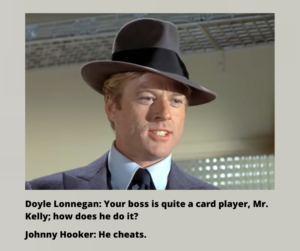 Many years ago, I stumbled onto a framework, then discovered an author that spelled it out in great detail, and over the years I’ve refined it a bit through further reading, more writing, and trial & error.
Many years ago, I stumbled onto a framework, then discovered an author that spelled it out in great detail, and over the years I’ve refined it a bit through further reading, more writing, and trial & error.
The author I refer to above is Steven Pressfield, who codified in exquisite and striking detail what I originally had only a vague hunch about. Where I saw the Boulevard Montmartre at Night, Pressfield saw Paris Street; Rainy Day. As such, what I present below is largely the work of Mr. Pressfield. Though I’ve adapted it through the years for my own use, all credit goes to him.
Whenever I’m asked to write something – no matter the length, context, or subject matter – I use this same method. But this not my secret or trick. Anyone can use this structure to write anything.
The answer to knowing how to write anything lies in asking the right questions.
What is this thing about?
Moby Dick: (Steven Pressfield): The clash between human will and the elemental malice of nature.
Moby Dick: (Michael Devers): When man’s will battles nature, both will be consumed in the struggle.
Figure out what you’re trying to say BEFORE you start writing. This is your theme.
What will the climax be? How will we bring it to a thrilling conclusion?
The climax needs to support the theme and support it directly. The best way to drive a nail into a board with one stroke is to hit it squarely with maximum force. Maximum force that misses the nail merely damages the wood. A square hit with weak force will drive the nail in, but it might take you three or four years. Your climax needs to bind a strong theme and a strong ending together.
Moby Dick: (Steven Pressfield): Ahab and the white whale duel to the death. No other climax is possible.
As with most everything, if you know where you want to be, it’s much easier to get there. If you know where you want to be, it's much easier to get there. Share on X
With the end nailed down, we turn our focus to the beginning.
How do we start? What foundation do we need to establish?
Moby Dick: (Michael Devers): Knowing that both our protagonist (Ahab) and antagonist (the white whale) will never make it to the end of the story alive, we need a witness, someone to carry the narrative thread. Call him Ishmael.
As we see in the Moby Dick example, while we need to introduce and establish our opposing forces (protagonist and antagonist), there may be other considerations as well. Just as every fraction of an ounce inside a house rests upon the foundation, so too does our story (or blog post, press release, article, speech, etc.). Build it strong enough to support the full weight of your creation.
We have our theme, the beginning, and the end. Now we fill in the gaps.
The Sticky Middle
Why sticky? Simple. This is where many people get stuck. With a bang-up beginning and a thrilling conclusion, it’s tempting to rush through the middle as quickly as possible to get to the good stuff. Don’t do it. The middle is the core. The heart of the matter. As much time (or space or words) should be spent in the middle as you do in the beginning and end combined. In fact, I like to picture this format in my mind when creating anything:
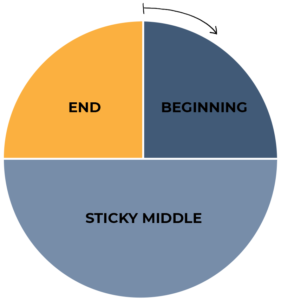
I also use it extensively when navigating through a crisis:
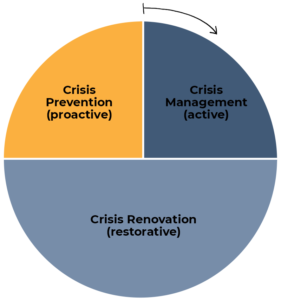
It’s employed in the standard three-act structure as well:
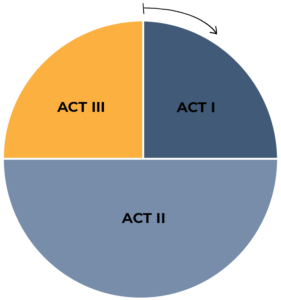
Once you’re aware of it, you can find this pattern almost anywhere:
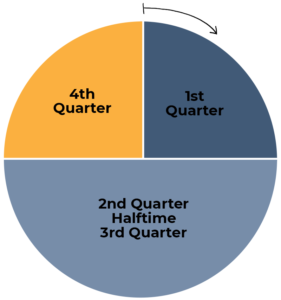
Here is the basic structure (borrowed from screenwriter pitch meetings).
- Strong opening with a strong hook
- Approximately three major moments in the middle
- Thrilling Conclusion
Examples always help me.
This Blog Post:
- Create a structure for anything you write
- Identify the structure
- The Theme and the End
- The Beginning
- The Middle
- Apply the structure to anything you write
The Hangover: (Steven Pressfield):
- Losing Doug
- Searching for Doug
- Stu marries a stripper
- Mike Tyson comes after his tiger
- Mister Chow brings the muscle
- Finding Doug
Raising Arizona: (Michael Devers)
- Taking Nathan Jr.
- Protecting Nathan Jr.
- Glen and Dot demand Nathan Jr.
- Gale and Evelle kidnap Nathan Jr.
- Bounty Hunter kidnaps Nathan Jr.
- Returning Nathan Jr.
These examples help illustrate the obvious. The beginning and the ending define the sticky middle. What happens between Losing and Finding? Searching. What happens between Taking and Returning? Protecting. What happens between Creating and Applying? Identifying.
Now that you see the pattern, wallow in the sticky middle. Luxuriate in it. You thrust the knife in with your opening, now twist it a few times before delivering the fatal blow.
Thrilling Conclusion
Use this structure to develop the main elements of the project, fill in the gaps that remain, and then give it one last read-through and polish when you’re done. It isn’t always easy, but the structure does make it simple.
If, in the past, you’ve approached writing as most people do – staring through a dense fog at a blank page waiting for inspiration to hit and curious where it would lead – using this method will be like seeing in color and three dimensions for the first time.
This structure is a blueprint for how to write anything. Grab a hammer and start swinging.
# # #
If this post was helpful, please be sure to read Steven Pressfield’s books on writing, and specifically, The War of Art and Do the Work.




Michael, I cannot explain to you how much this resonated with me. Thank you for writing it. Not only the areas that you pointed out but also conveying a message to a team or leadership. What is the message you are trying to get across, how are going to suck in your audience, and then make them want more of what you are telling them. I struggle in the details and can easily lose an audience, this post reminded me of what I try to do in all things when telling a story, training, briefing, or presenting to any team. Reel them in within the first 5 minutes, hit the highlights, what, when, how, and who are going to get us there, and how we are going to get it done. Thank you again sir I appreciate what you do!
Thank you, Randy! I really appreciate your kind comment. I started writing this post as a reminder to myself more than anything else as it helps me on almost a daily basis. Very glad to hear you’re able to apply it to your daily work as well!